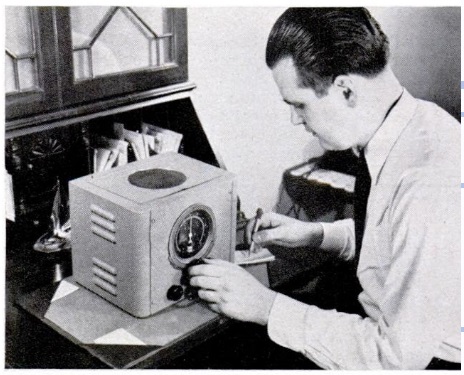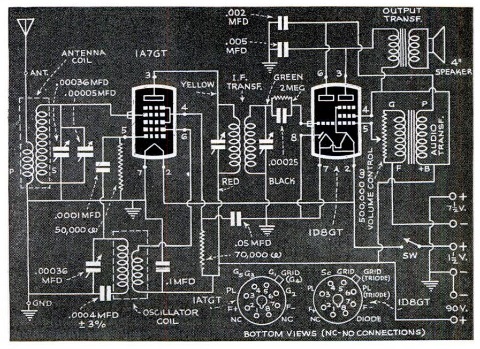Seventy-five years ago this month, the October 1941 issue of Popular Science showed how to put together this two-tube superheterodyne broadcast set. With a 20 foot antenna lying in the floor, the set would provide loudspeaker volume.
The article noted that even a few years earlier, a superhet would consist of at least seven tubes. But with advances in tube technology, this two-tube set was now possible. A 1A7GT pentagrid tube served as first detector and local oscillator. This was fed to the triode section of a 1D8GT which served as detector. The other half of the 1D8GT served as audio amplifier to drive the speaker.
This was a battery set, with a 1.5 volt dry cell running the filaments. The B+ voltage came from a 90 volt battery, with a 7.5 volt C battery also used.
Since batteries were in relatively short supply during the war, it’s likely that any readers who built this set probably left it on the shelf for most of the next four years.
Click Here For Today’s Ripley’s Believe It Or Not Cartoon
![]()


